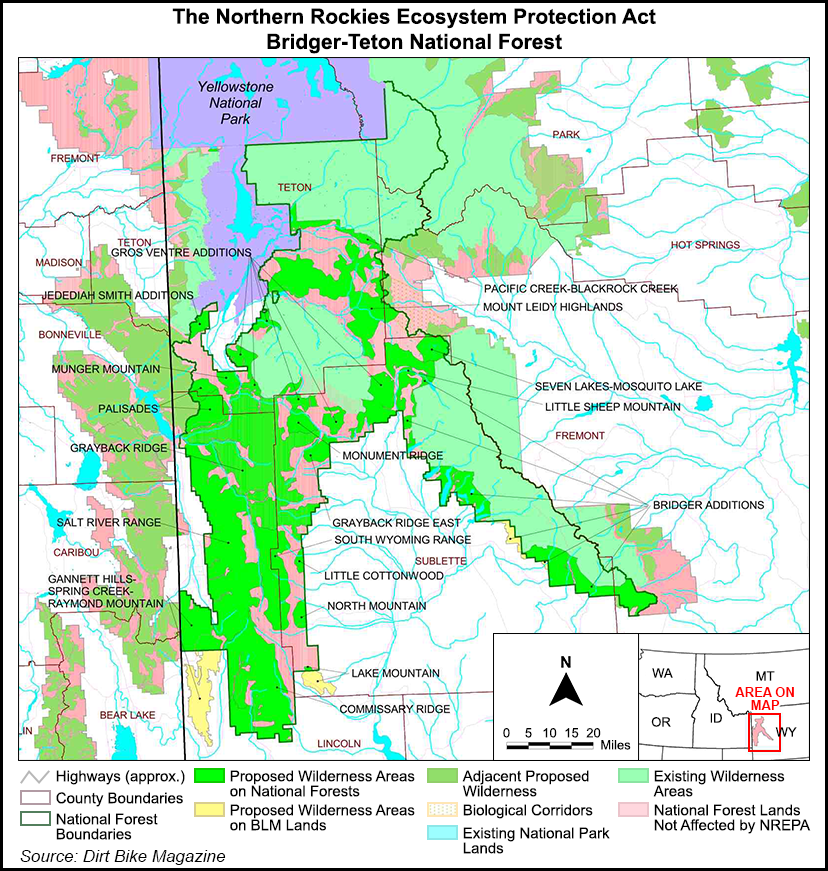Regulatory | NGI All News Access
In Final Days of Obama Administration, USFS Moves to Quash Wyoming Leases
A focus of oil/natural gas industry and environmental tensions for years, the Bridger-Teton National Forest in Wyoming became a last stand for the Obama administration recently as U.S. Forest Service (USFS) officials took steps to protect 40,000 acres within the national forest from potential oil/gas leasing.

The move could be construed as setting aside acreage prior to the change of administrations in Washington, DC.
Some observers in the nation’s capital are interpreting as unprecedented the announcement by Robert Bonnie, the undersecretary of Agriculture overseeing USFS, that the federal agency will withdraw a set of disputed oil and gas leases covering nearly 40,000 acres inside Bridger-Teton National Forest.
In an agency announcement, Bonnie said he has reserved the authority to sign a record of decision (ROD) formally approving the action and bypassing an administrative appeals process. As a result, the decision will be finalized just days before Donald Trump is inaugurated.
Throughout his campaign and since the election, the president-elect has vowed to roll back Obama administration regulations and open up more federal lands to fossil fuel development and mining activity.
The involved leases comprise 30 parcels covering 39,490 acres in the eastern slope of the Wyoming Range, an area that includes critical wildlife habitat, including recreational sites in the territory carved out by the Wyoming Range Legacy Act, which was signed into law by President Obama in 2009. The law permanently set aside 1.2 million acres in and around Bridger-Teton from energy development.
However, the law grandfathered many existing drilling leases covering roughly 120,000 acres, including the leases on the 30 parcels in question in the USFS’s final decision.
Bonnie’s decision to sign the ROD 30 days after publication of the final supplemental environmental impact statement in last Friday’s Federal Register makes the decision final, according to USFS officials, who said the action is unrelated to the transition to the new administration.
Officials in a statement regarding the final EIS said the action was based upon “overwhelming public comment and significant recreation, wildlife and watershed values identified,” and thus, there are no preferred alternatives for leasing.
After originally granting the leases more than 10 years ago, the USFS withdrew them, only to reverse that decision in 2011.
At that time, USFS was challenged in court by Stanley Energy Inc., Western Energy Alliance, Wold Oil Properties Inc. and the Sublette County, WY, commissioners. The appellants said the decision was inconsistent with the National Forest Management Act, Administrative Procedures Act, the Federal Onshore Oil and Gas Leasing Reform Act, the Endangered Species Act and the National Environmental Policy Act.
© 2024 Natural Gas Intelligence. All rights reserved.
ISSN © 1532-1231 | ISSN © 2577-9877 |
